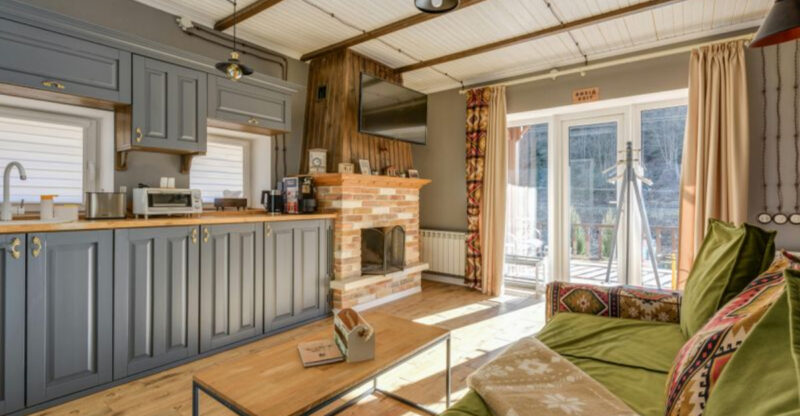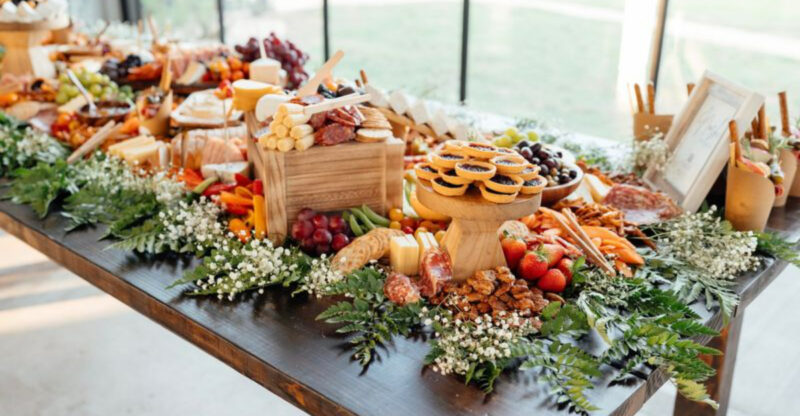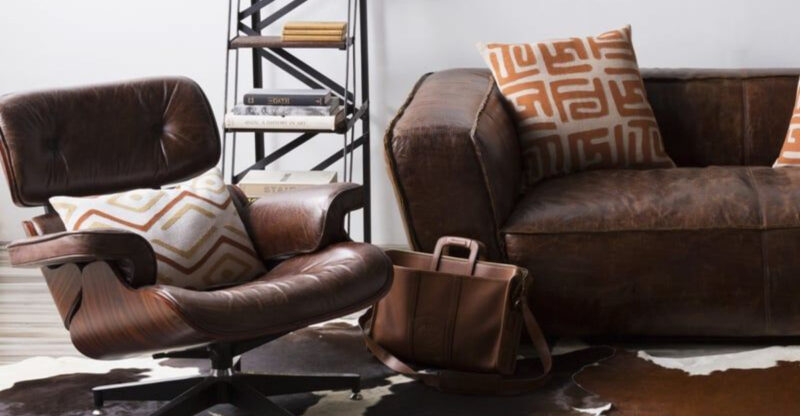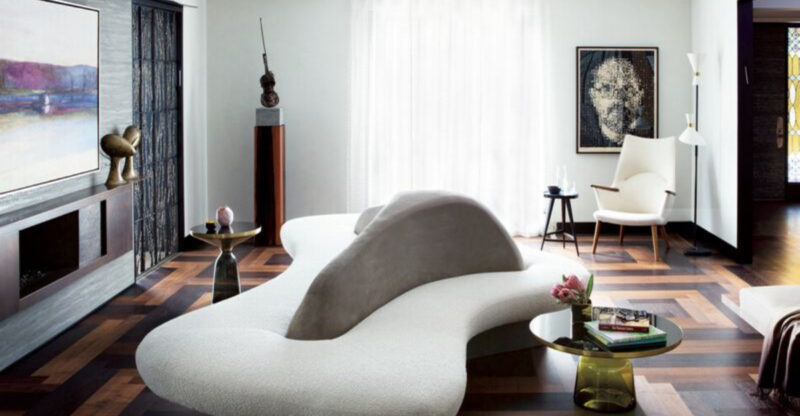16 Kitchen Shades Chicago Kitchens Are Ditching In 2025 (Plus 4 That Were Never Cool)
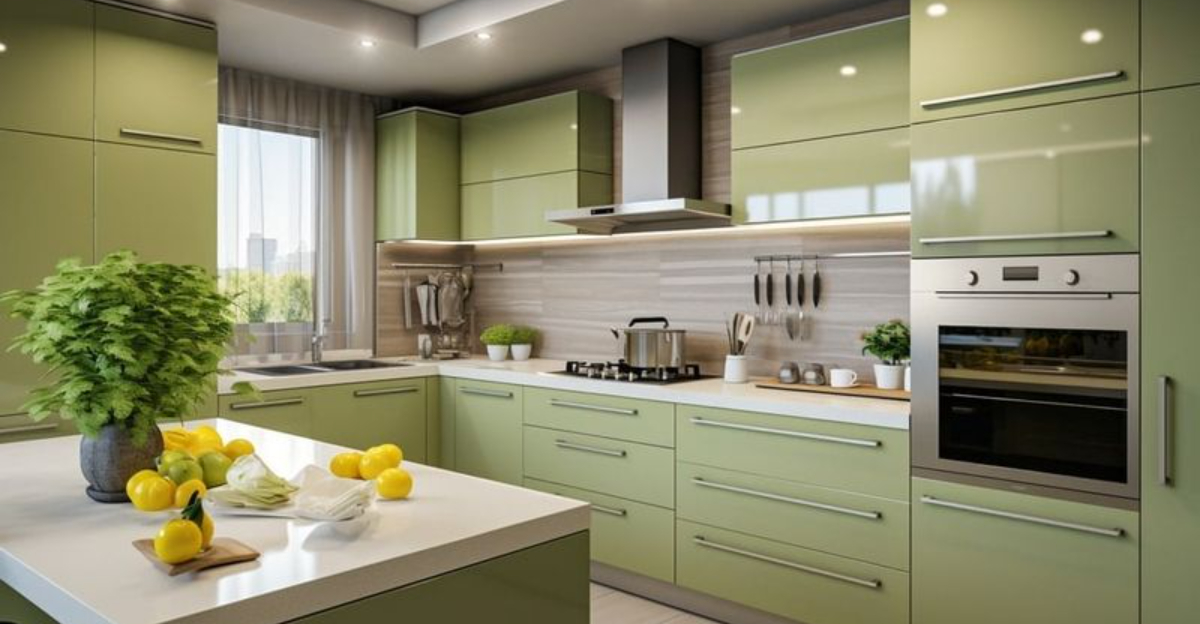
Chicago kitchens are undergoing a major color revolution as we approach 2025.
Homeowners across the Windy City are saying goodbye to certain shades that dominated the last decade while embracing fresh new palettes that better reflect current design sensibilities.
I’ve compiled a definitive list of the 16 colors Chicagoans are actively removing from their kitchens, plus 4 unfortunate hues that never quite made the cut in the first place.
1. Sage Green Gets the Boot
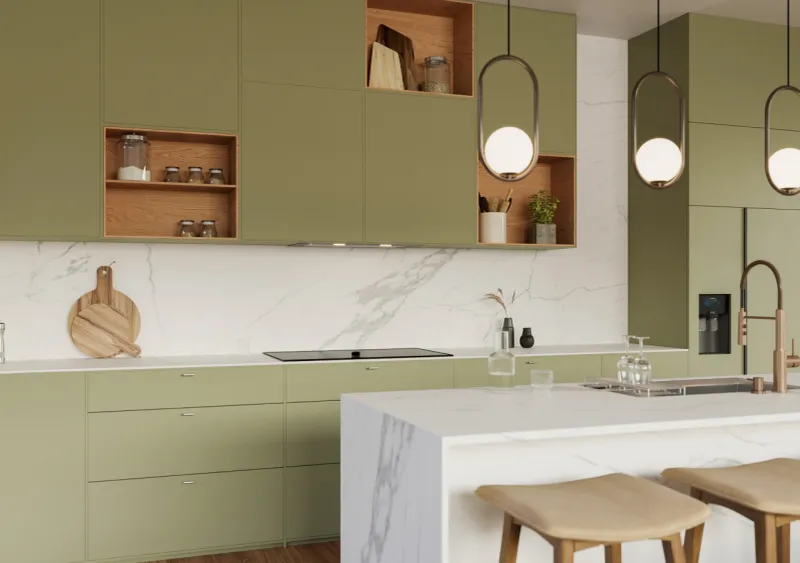
Once the darling of kitchen design, sage green is rapidly disappearing from Chicago’s culinary spaces. This muted, earthy tone that promised calm sophistication has become a victim of its own popularity.
Homeowners who jumped on the sage bandwagon are now finding their kitchens look dated rather than timeless. The shade that dominated Pinterest boards since 2019 has lost its luster as people seek brighter, more energetic environments.
Instead of sage, I’m seeing a shift toward clearer greens with more personality – think vibrant emerald or softer celadon that bring genuine character rather than following a fading trend.
2. Navy Blue Sails Away
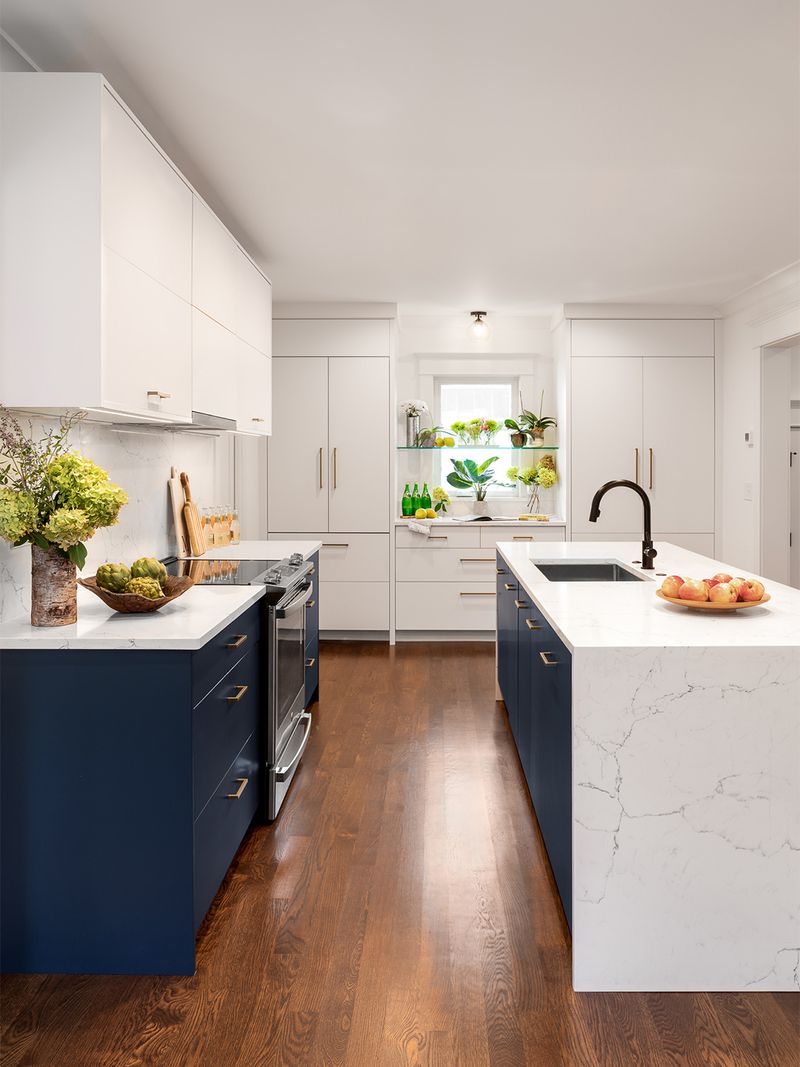
Navy blue kitchens are heading out to sea as Chicago homeowners embrace lighter alternatives. What once felt bold and sophisticated now comes across as heavy and light-absorbing, especially during those infamous Chicago winters.
The dramatic dark blue that adorned islands and cabinetry throughout the 2020s created statement kitchens, but people are discovering how quickly the color shows fingerprints and scratches. Maintenance headaches combined with evolving tastes have put navy on the chopping block.
Many homeowners are replacing navy with softer blues that still provide color but feel more breathable and adaptable to changing décor trends.
3. Charcoal Gray Fades to Black
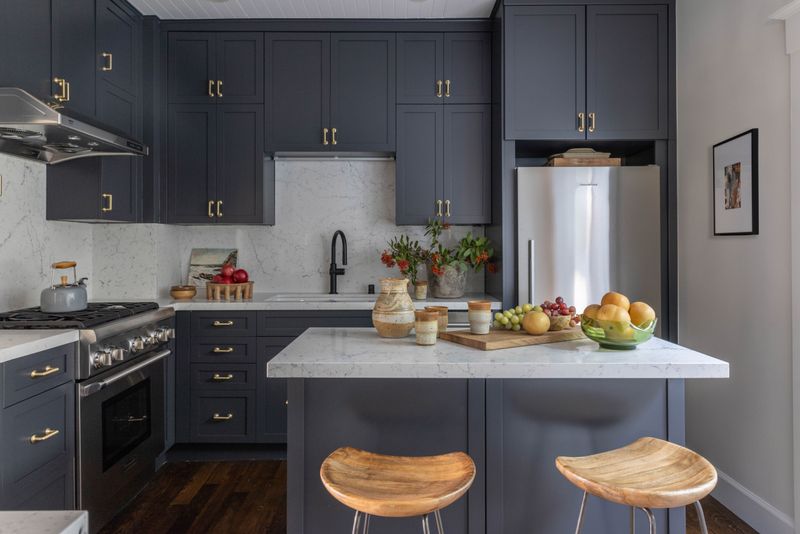
Charcoal gray, once considered the sophisticated neutral, is rapidly disappearing from Chicago kitchens. This moody shade that promised urban sophistication has left too many spaces feeling cave-like and oppressive.
I’ve talked with numerous homeowners who initially loved their charcoal cabinets but grew tired of how the color absorbed light rather than reflected it. During Chicago’s notoriously gray winter months, these kitchens felt particularly dreary and uninspiring.
The replacement? Warmer neutrals and greiges that provide depth without the heaviness, creating spaces that feel welcoming rather than austere. The shift away from charcoal signals a broader move toward kitchens that energize rather than subdue.
4. Dark Cherry Red Gets Chopped
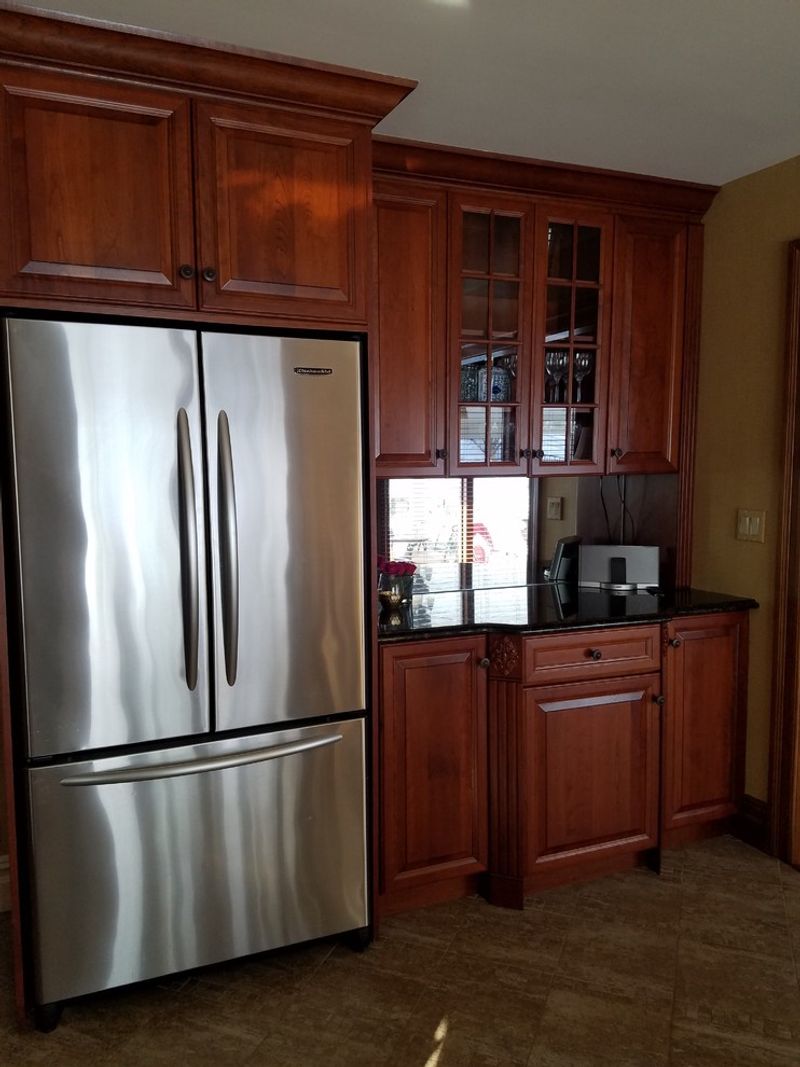
Dark cherry red, that rich burgundy-tinged hue that dominated kitchens in the early 2000s, is finally seeing its complete extinction in Chicago homes. This intense color that once signaled luxury has become the hallmark of outdated design.
Homeowners have realized how this heavy red tone makes spaces feel smaller and more confined. When combined with the cherry wood cabinetry it often accompanied, these kitchens now scream “renovation needed” to potential buyers.
The trend toward airier, more open-feeling kitchens has put the final nail in dark cherry’s coffin. Chicago designers report it’s one of the first things clients want to eliminate when updating their homes.
5. Mustard Yellow Loses Its Spice
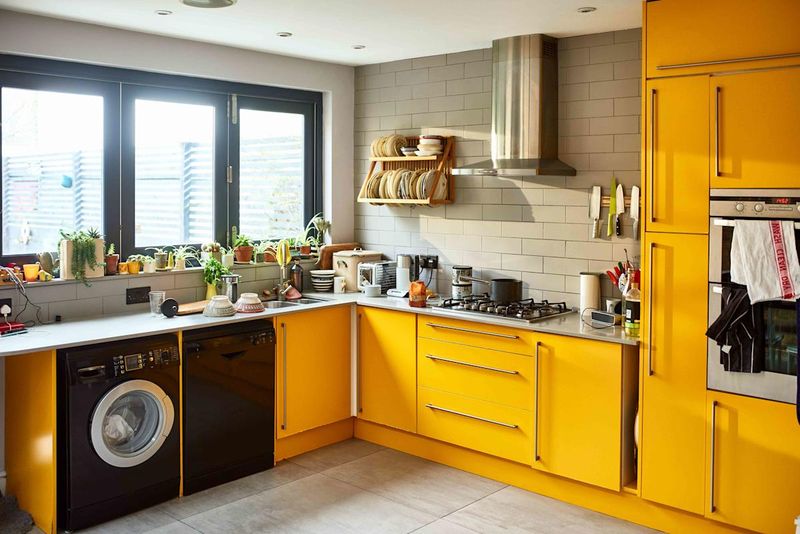
Mustard yellow, that bold vintage-inspired tone that made a comeback during the mid-2010s, is rapidly disappearing from Chicago kitchens. This punchy color that once felt retro-cool now reads as aggressively dated.
Many homeowners who embraced mustard as an accent wall or cabinet color are now regretting the choice. The shade tends to cast unflattering yellow tones throughout the space, making food photography a modern kitchen essential particularly challenging.
Chicago designers note that clients are replacing mustard with softer, more versatile yellows like butter or cream that provide warmth without overwhelming the senses. The shift reflects a broader move toward subtlety rather than statement colors in kitchen design.
6. Terracotta Cracks Under Pressure
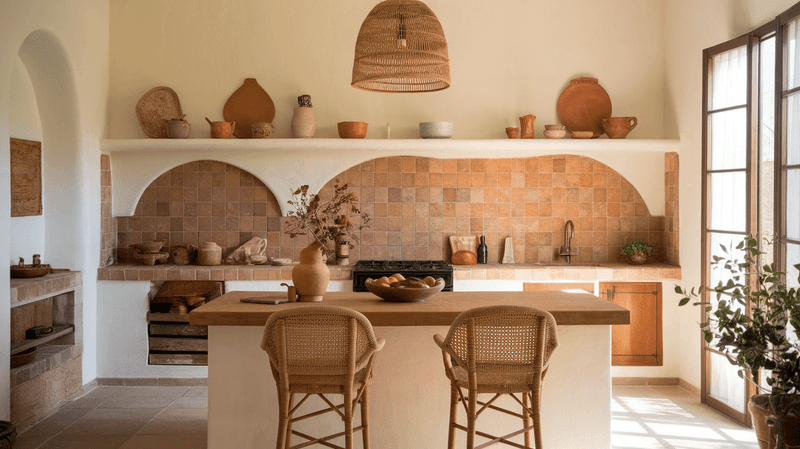
Terracotta, the earthy orange-brown that enjoyed a brief renaissance during the Southwest design craze, is rapidly disappearing from Chicago kitchens. This warm desert tone that promised Mediterranean vibes has proven too regionally specific for Midwest sensibilities.
Homeowners who embraced terracotta found it challenging to coordinate with other elements and too thematically limiting. The color’s strong personality demanded a commitment to a specific aesthetic that many found restrictive over time.
Chicago’s design community reports clients are replacing terracotta with more versatile warm neutrals that reference natural elements without the heavy-handed regional association. The shift highlights a preference for flexible design foundations rather than strongly themed spaces.
7. Deep Plum Gets Pruned
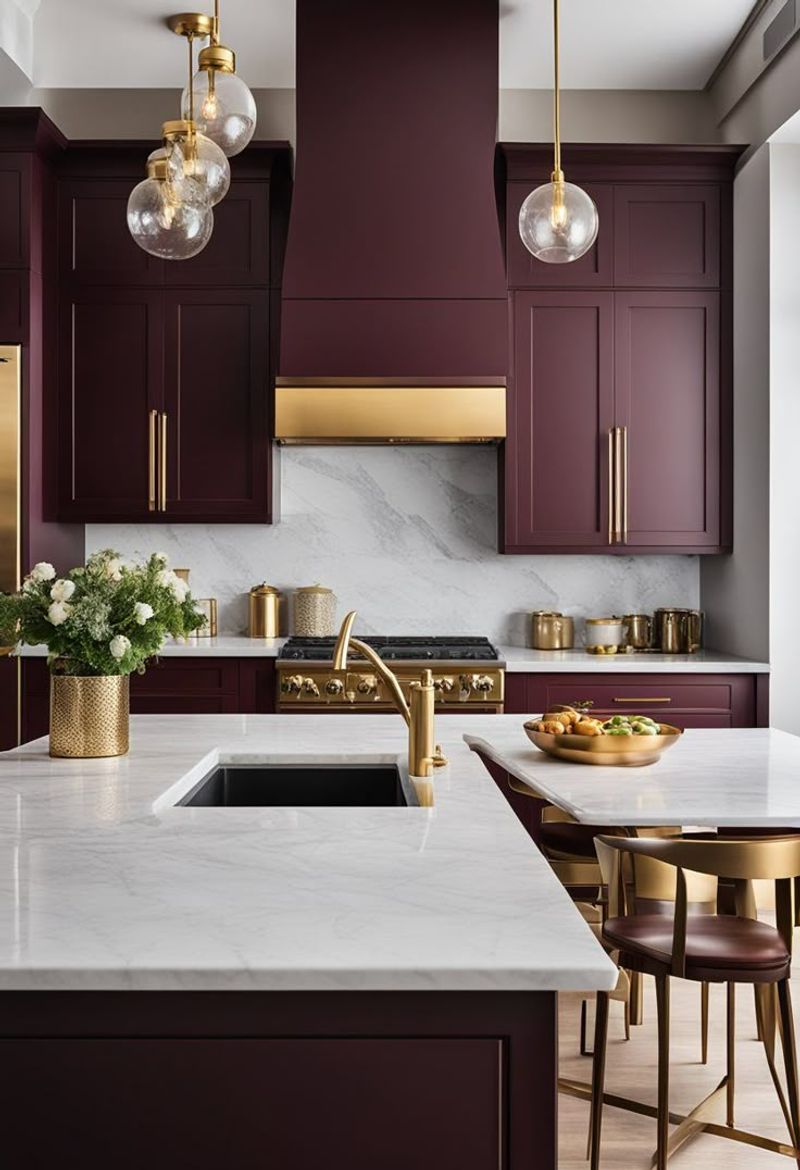
Deep plum, that rich purple tone that promised drama and luxury, is being rapidly eliminated from Chicago kitchens. This bold jewel tone that briefly captivated homeowners seeking something different has proven too intense for daily living.
Chicago interior designers report that clients who experimented with plum quickly tired of its dominating presence. The color tends to make spaces feel smaller and darker particularly problematic during Chicago’s limited-sunlight winter months.
Instead of deep plum, homeowners are gravitating toward softer lavenders and mauves when they want a purple presence, or abandoning the purple family altogether. The shift reflects a broader move toward colors that enhance rather than dominate living spaces.
8. Bright Teal Makes a Splash Exit
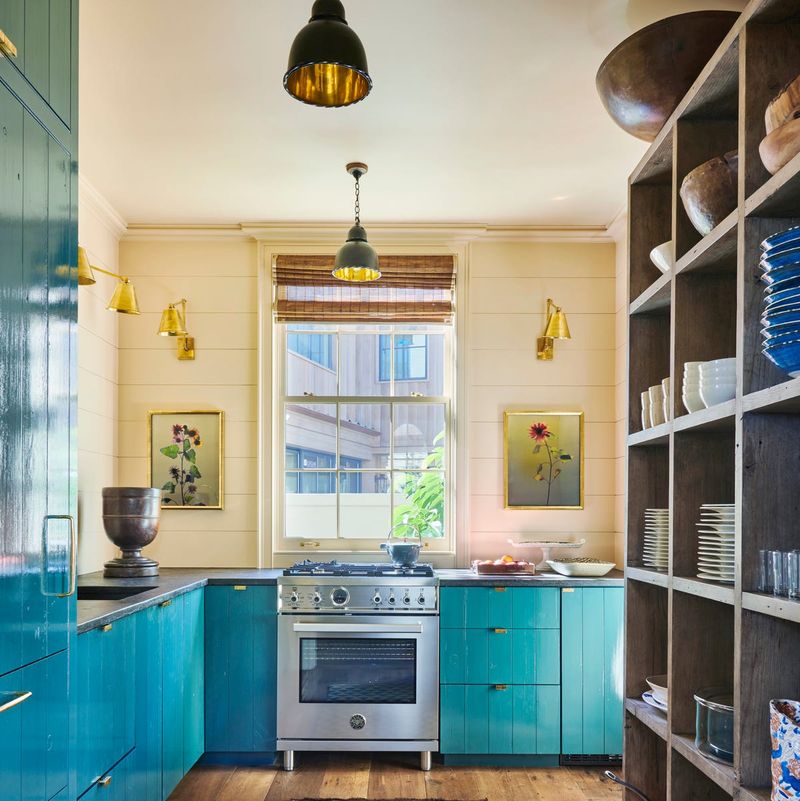
Bright teal, that vibrant blue-green that made bold statements in trendy Chicago kitchens, is rapidly washing away. This eye-catching color that once signaled design confidence has become associated with short-lived trend-chasing rather than timeless style.
Homeowners who embraced teal as their signature kitchen color are discovering how quickly something so bold can feel dated. The intensity that initially felt fresh now overwhelms the space, competing with rather than complementing food and gatherings.
Chicago designers note clients are replacing bright teal with more subdued blue-greens that provide character without shouting for attention. This shift reflects a broader movement toward kitchen colors that serve as sophisticated backdrops rather than conversation-dominating features.
9. Burnt Sienna Burns Out
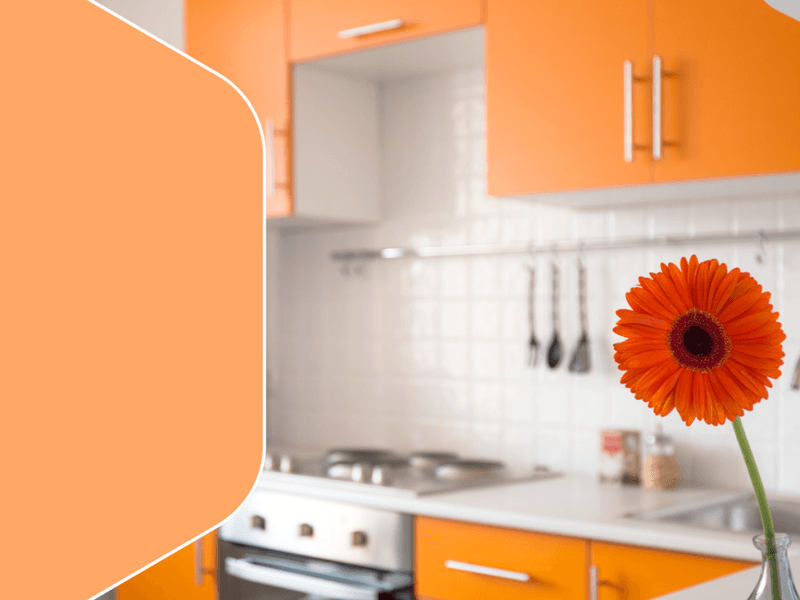
Burnt sienna, that rusty orange-brown that promised warmth and earthiness, is rapidly disappearing from Chicago kitchens. This 70s throwback color briefly enjoyed a revival but has proven too specific and dominating for most homeowners’ long-term satisfaction.
Many Chicagoans who embraced this warm tone found it increasingly difficult to coordinate with other design elements. The strong personality of burnt sienna demanded commitment to a particular aesthetic that became limiting over time.
Local designers report clients are replacing this intense terracotta-adjacent shade with more versatile warm neutrals that provide coziness without the heavy retro associations. The shift indicates a preference for colors that complement rather than dictate kitchen design direction.
10. Pale Lavender Loses Its Bloom
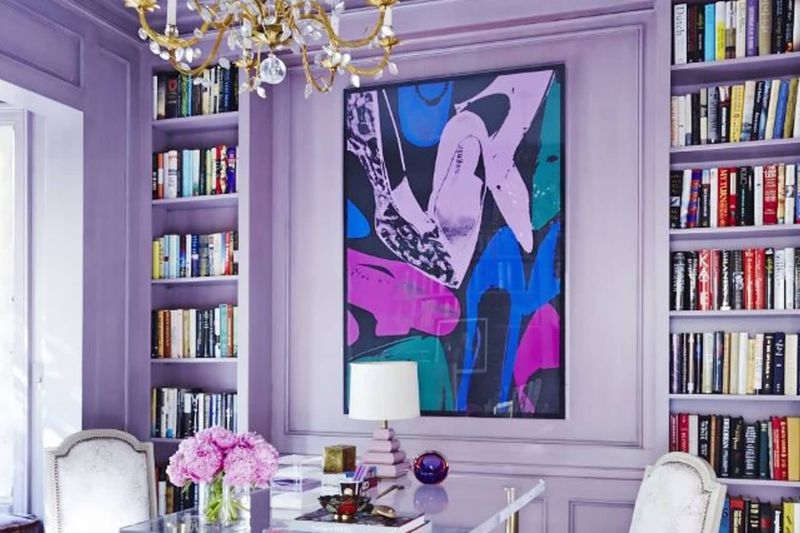
Pale lavender, that soft purple-tinged pastel that promised soothing vibes, is quickly fading from Chicago’s culinary spaces. This gentle hue that seemed like a safe bet for adding subtle color has proven problematic in kitchen environments.
Homeowners discovered that lavender tends to clash with food tones and can cast unflattering light on both meals and guests. Chicago’s practical homeowners found the color too precious and impractical for hardworking kitchen spaces.
Design professionals report clients are replacing lavender with true neutrals that provide a clean backdrop for food and gathering. This shift reflects the growing recognition that kitchen colors should enhance rather than compete with the room’s primary functions.
11. Rustic Brown Gets Refined Away
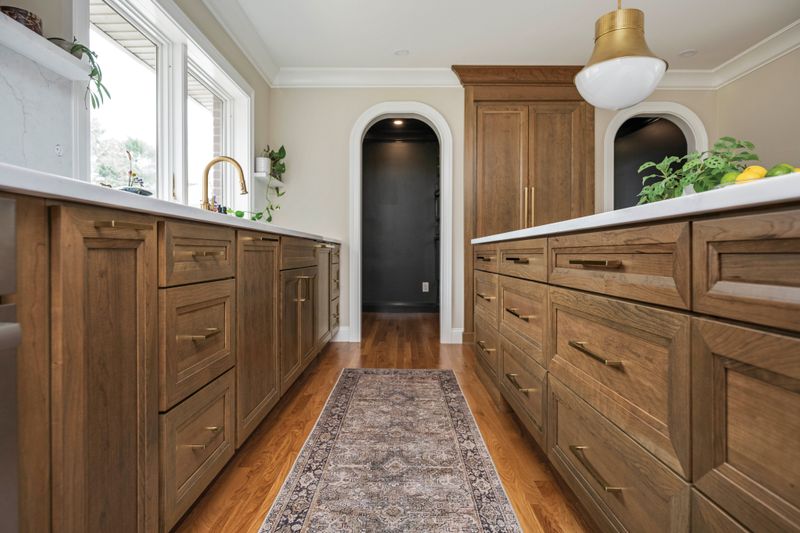
Rustic brown, that muddy, weathered tone that dominated farmhouse-style kitchens, is being rapidly refined out of Chicago homes. This deliberately aged-looking color that promised country charm has become the poster child for dated design trends.
Chicago homeowners who embraced the farmhouse aesthetic are now finding these intentionally distressed browns look simply tired rather than charmingly aged. The color has become so strongly associated with a specific 2010s trend that it immediately dates any kitchen.
Instead, I’m seeing a shift toward cleaner, more sophisticated browns with less yellow undertone when warmth is desired. This evolution signals Chicago’s move toward timeless design rather than trendy theme-based décor.
12. Mint Green Loses Its Freshness
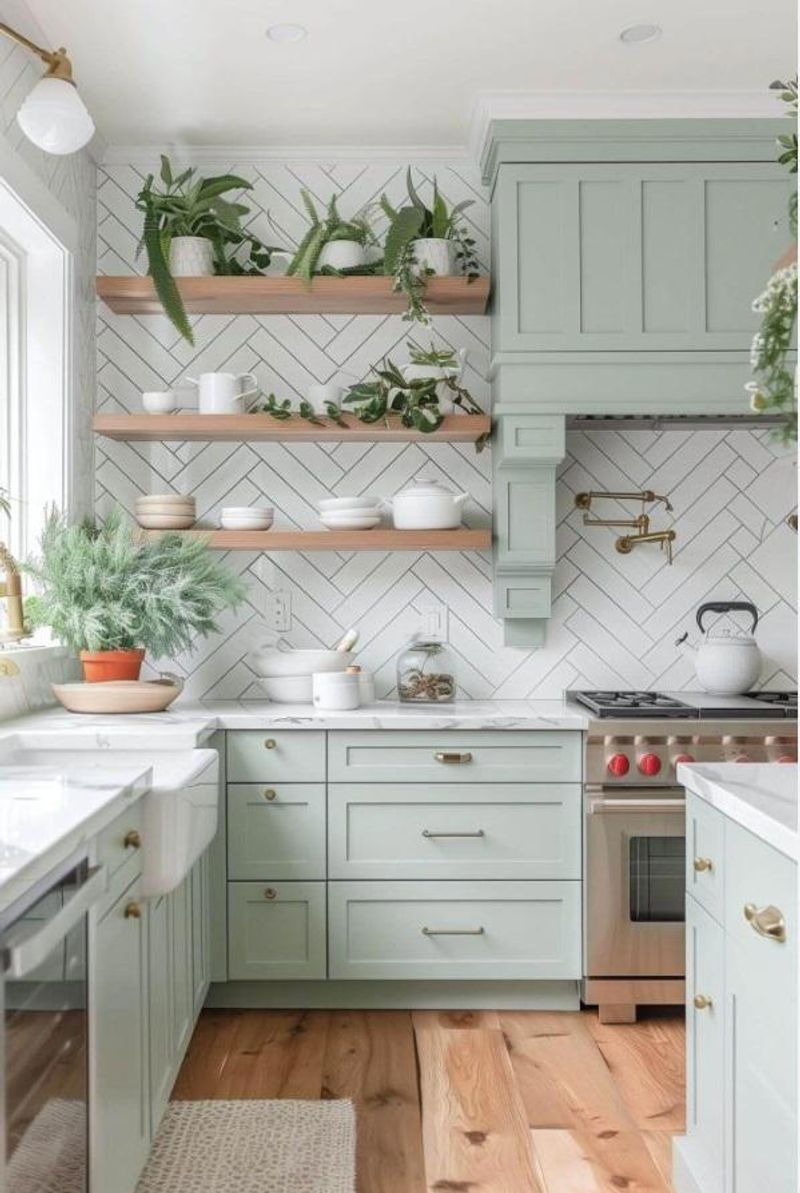
Mint green, that sweet pastel that promised retro charm and freshness, is rapidly disappearing from Chicago kitchens. This color that briefly captured hearts during the vintage revival trend has proven too specific and saccharine for long-term satisfaction.
Homeowners who embraced mint found themselves locked into a particular aesthetic that limited other design choices. The distinctive color that initially felt character-filled began to feel childish or overly thematic as design preferences evolved.
Chicago designers report clients are replacing mint with more sophisticated greens that provide nature-inspired freshness without the candy-colored overtones. This transition reflects a broader movement toward kitchen colors with depth and subtlety rather than nostalgic novelty.
13. Chocolate Brown Melts Away
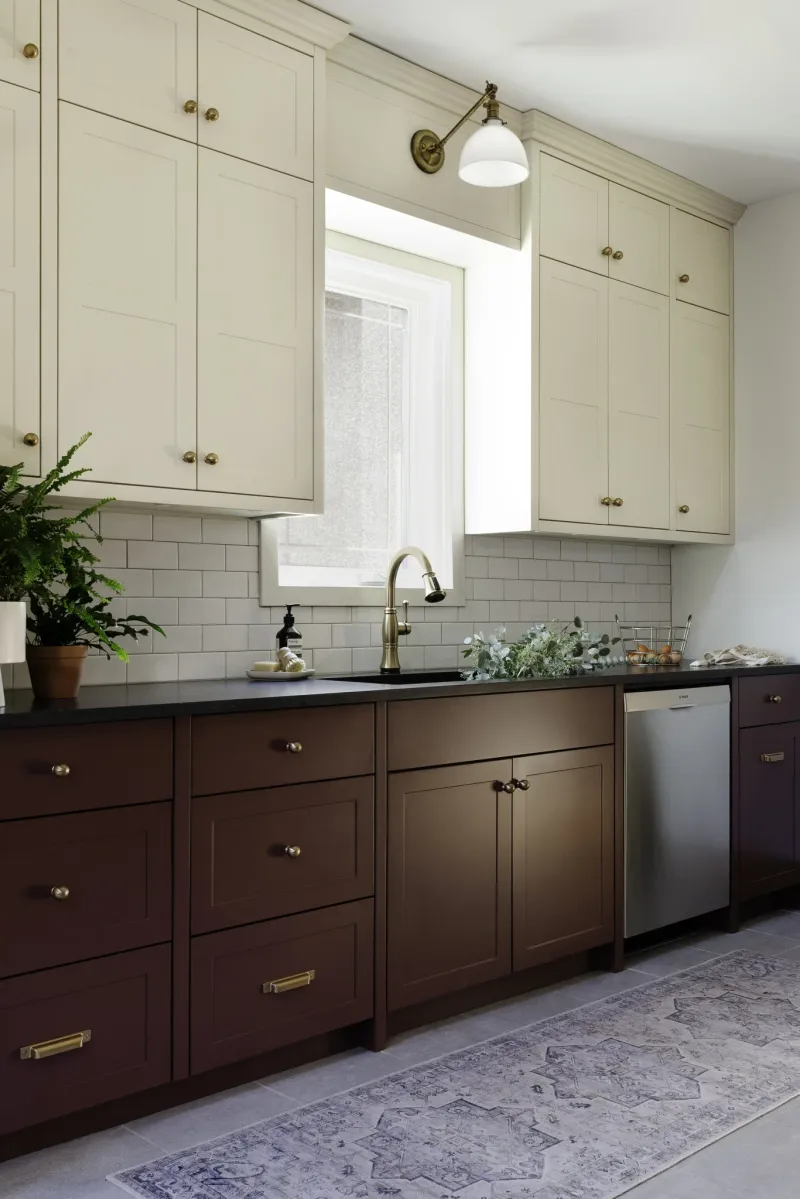
Chocolate brown, that rich, deep tone that dominated kitchens in the early 2000s, is finally seeing its complete exit from Chicago homes. This intense color that once signaled luxury has become synonymous with dated design choices.
Homeowners have discovered how this dark, heavy shade makes spaces feel smaller and more confined. When paired with the cherry wood and granite it typically accompanied, these kitchens now feel like time capsules from two decades ago.
Chicago’s forward-thinking residents are replacing chocolate brown with lighter, more reflective tones that create a sense of spaciousness. This shift aligns with the broader trend toward kitchens that feel open, airy, and conducive to both cooking and gathering.
14. Forest Green Gets Cleared Out
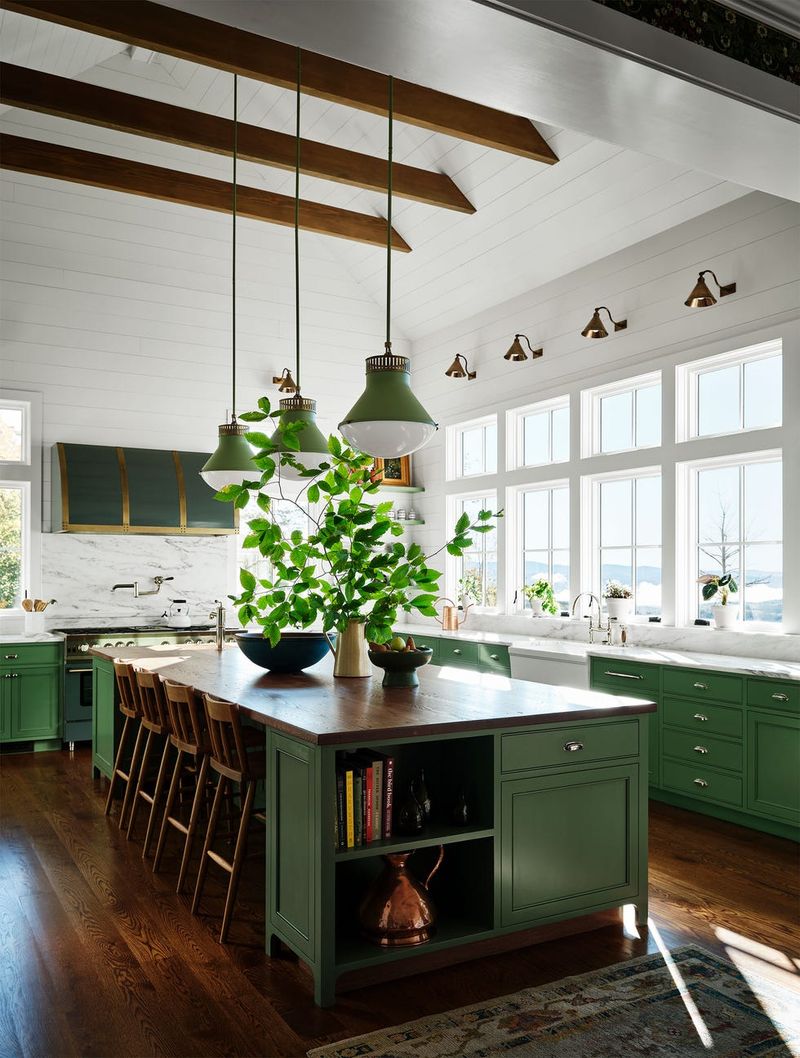
Forest green, that deep, saturated shade reminiscent of dense woodlands, is being cleared from Chicago kitchens at a rapid pace. This intense color that promised traditional elegance has proven too heavy and light-absorbing for modern tastes.
Homeowners who chose forest green hoping for timeless sophistication found instead that the color dominated their spaces and limited other design choices. During Chicago’s gray winters, these dark green kitchens often felt gloomy rather than cozy.
Local designers report clients are replacing forest green with lighter, brighter greens that reference nature without the heaviness. This evolution reflects the broader shift toward kitchen spaces that feel uplifting and energizing rather than formal and constrained.
15. Bronze Metallic Finish Loses Its Shine
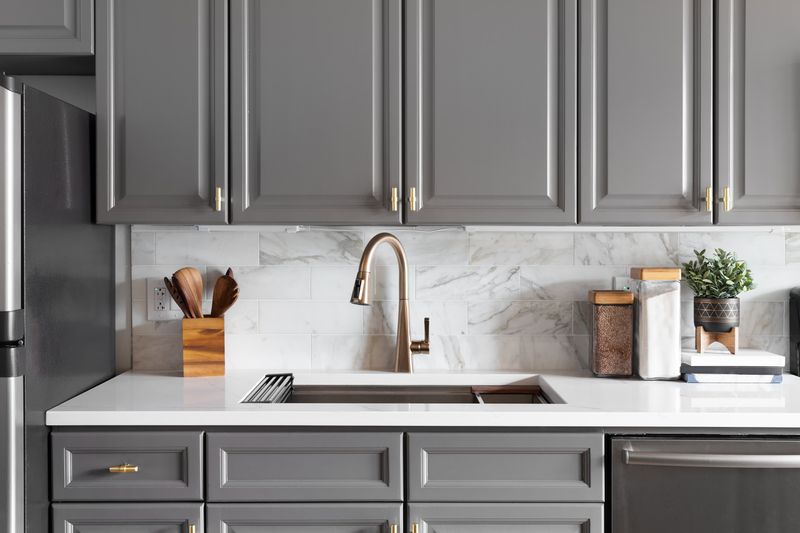
Bronze metallic finish, that warm-toned shimmer that promised luxury and warmth, is rapidly tarnishing in Chicago’s design scene. This finish that adorned everything from cabinet hardware to appliances has fallen victim to changing metallic preferences.
Homeowners who invested in bronze features are discovering how quickly specific metal trends cycle compared to other design elements. The finish that was meant to feel timeless now clearly stamps a kitchen as designed in the late 2010s.
Chicago’s design-conscious residents are replacing bronze with either true classics like brushed nickel or newer but more subtle options like black matte finishes. This pivot demonstrates a growing preference for hardware choices that complement rather than define kitchen design.
16. High-Gloss Black Fades Out
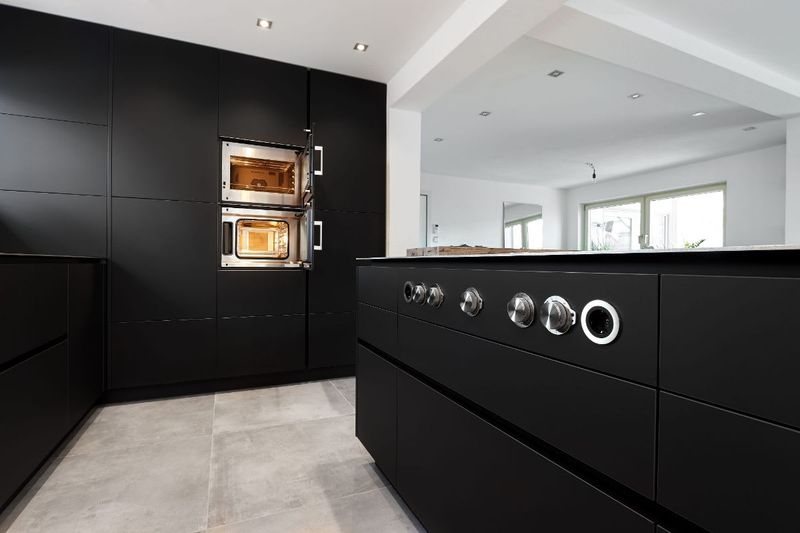
High-gloss black, that mirror-like finish that promised sleek sophistication, is quickly losing its appeal in Chicago kitchens. This ultra-shiny surface that once signaled urban luxury has revealed its practical limitations to even the most style-conscious homeowners.
Chicagoans discovered that high-gloss black shows every fingerprint, water spot, and dust particle with merciless clarity. The maintenance requirements proved exhausting, with cabinets needing constant wiping to maintain their intended look.
Design professionals report clients are replacing high-gloss black with matte or satin black when they want drama, or abandoning black altogether. This shift reflects the growing priority placed on livability and functionality alongside aesthetics in kitchen design.
17. Neon Green: A Kitchen Nightmare
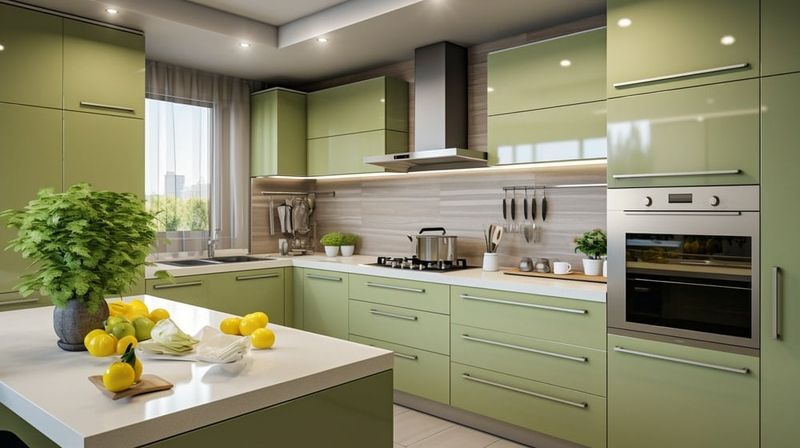
Neon green never had its moment in Chicago kitchens – and for good reason. This electric, eye-searing shade creates an environment that’s more headache-inducing than hunger-stimulating.
A few bold homeowners experimented with neon green accents during the brief 80s revival trend, quickly discovering why this color belongs in nightclubs rather than culinary spaces. The intense hue casts an unflattering glow on food and faces alike, making both your morning coffee and dinner guests look slightly ill.
Chicago designers unanimously agree this is one color that should remain in the realm of fashion accessories rather than permanent home features. When clients request “energizing” greens, professionals gently steer them toward more livable options.
18. Bubblegum Pink: Not Even Once
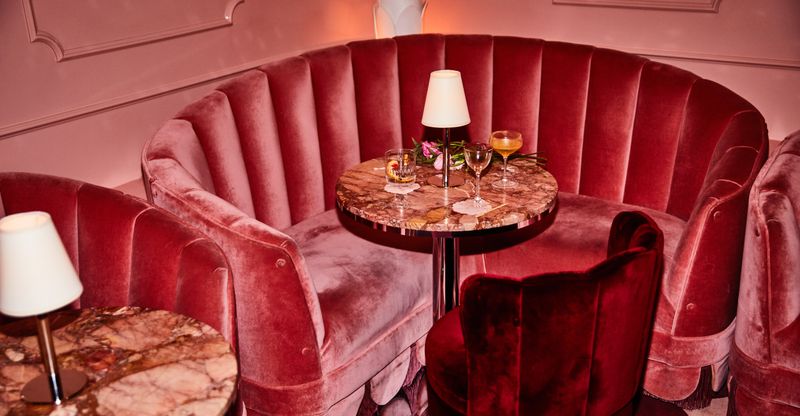
Bubblegum pink never managed to secure legitimate kitchen status in Chicago homes, remaining firmly in the category of colors best left to children’s bedrooms. This saccharine shade creates an environment that feels more like a toy kitchen than a functional adult space.
A handful of adventurous homeowners briefly flirted with pink kitchens during various retro revivals, quickly discovering the color’s limited staying power. Beyond the challenge of coordinating with other elements, bubblegum pink tends to cast an unflattering pinkish light that makes food look unappetizing.
Chicago’s practical homeowners have consistently rejected this color for cooking spaces, recognizing that what seems charming in small doses becomes overwhelming when applied to entire rooms.
19. Flamingo Orange: Forever Unfashionable
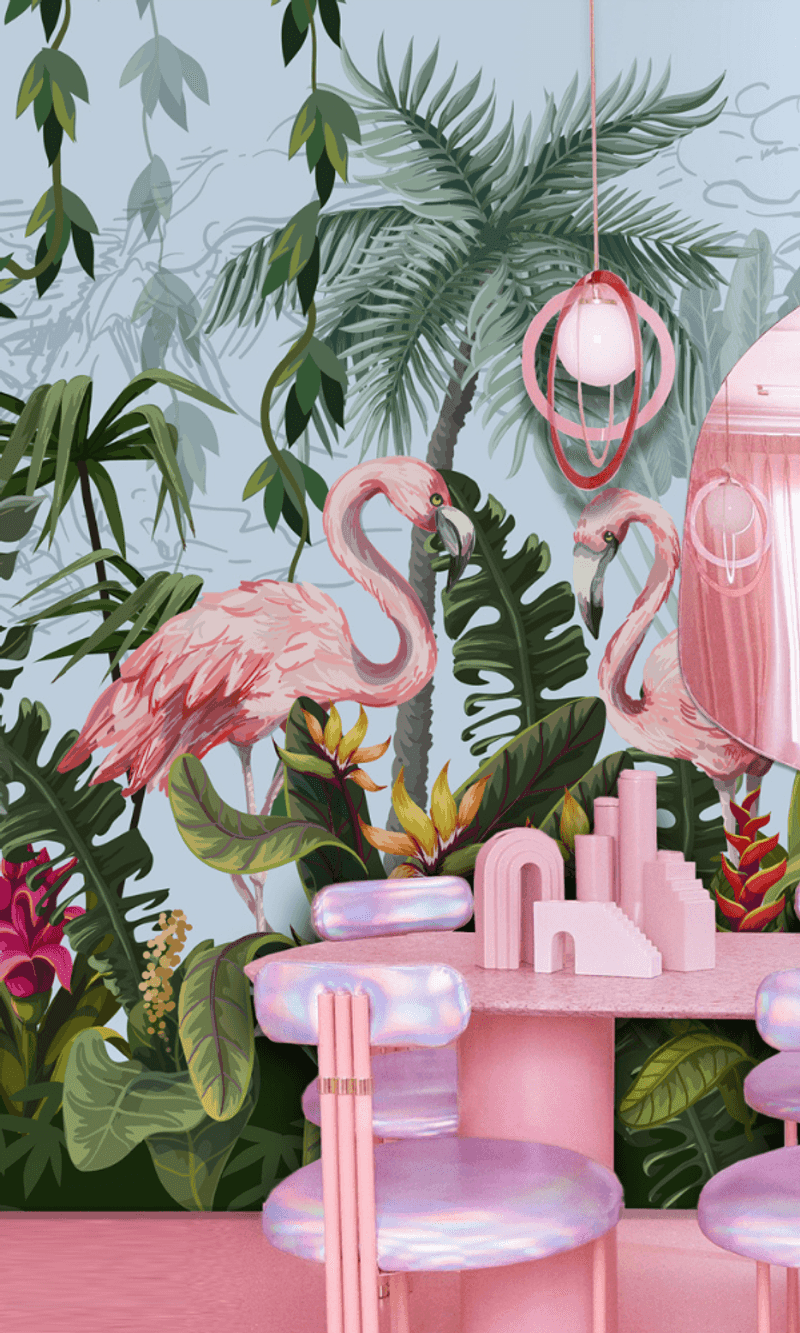
Flamingo orange, that vibrant pinkish-orange reminiscent of plastic lawn ornaments, never found legitimate footing in Chicago’s kitchen design scene. This aggressively bright color creates spaces that feel more like fast-food restaurants than sophisticated home kitchens.
A few trend-chasing homeowners experimented with flamingo orange during brief tropical design moments, quickly discovering its limited versatility. The intense hue overwhelms other design elements and creates an environment that feels perpetually stimulating rather than occasionally calming.
Chicago’s design professionals report this is one of the colors clients specifically mention wanting to avoid. When homeowners request “warm” or “energetic” kitchens, designers carefully steer them toward more sophisticated oranges with brown or red undertones.
20. Sparkly Glitter Paint: Kitchen Kryptonite
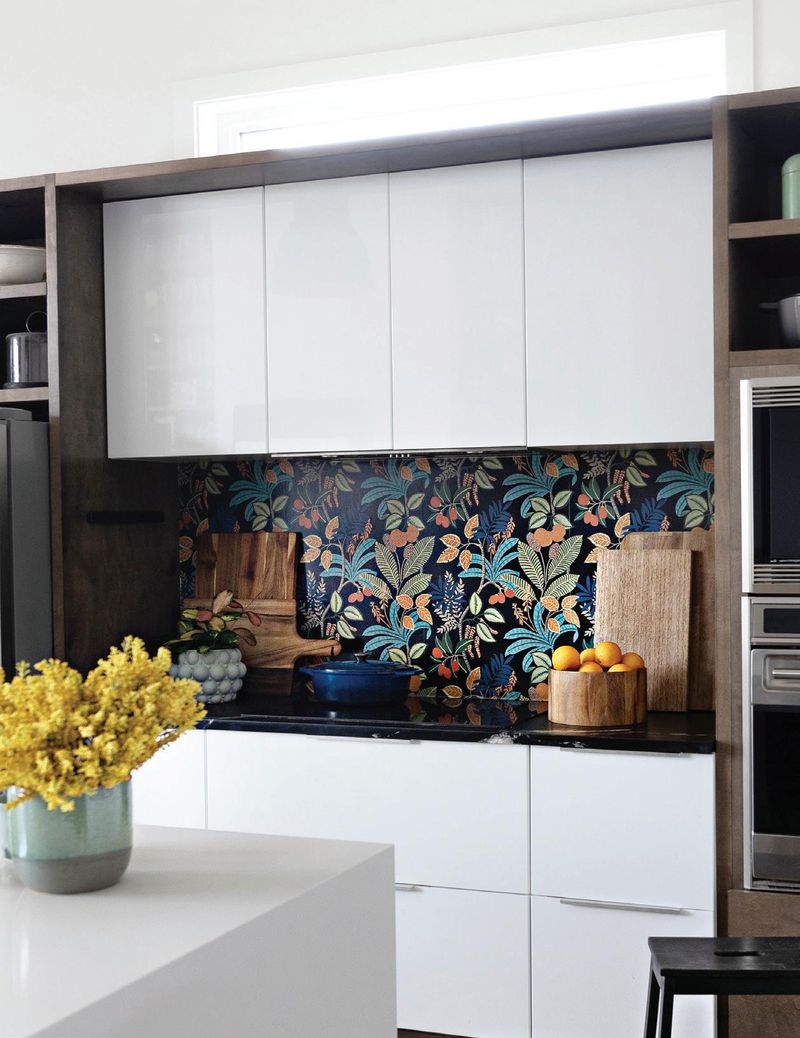
Sparkly glitter paint never had a legitimate moment in Chicago kitchens, remaining firmly in the realm of design disasters. This finish that might charm in small doses becomes a cleaning nightmare and visual assault when applied to kitchen surfaces.
A few experimental homeowners briefly attempted glitter accent walls during the DIY boom, quickly discovering that food preparation and loose glitter particles make for a particularly problematic combination. Beyond practical concerns, the juvenile associations with glitter make kitchens feel more like craft rooms than sophisticated culinary spaces.
Chicago designers unanimously consider glitter finishes to be among the least appropriate options for kitchens, steering clients toward subtle metallics or textured finishes when they want surfaces with visual interest.

